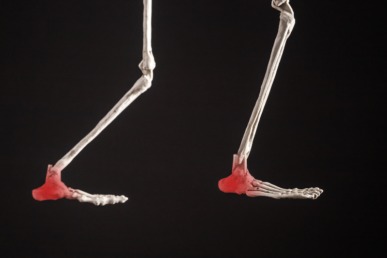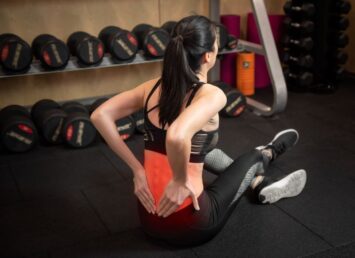Standing up straight can make a person appear taller, slimmer, more confident, and to some, more attractive. But good posture affects much more than a person’s appearance. Posture is the physical manifestation of how a body responds to the ever-present force of gravity. Good posture, or proper spinal alignment, illustrates the even distribution of that force over the body’s joints, ligaments, and muscles, while poor posture can mean that a particular area, or areas, are overstressed.
With proper postural alignment, the body can work more efficiently with less strain and fatigue.
While most people think of the standing profile when discussing posture, it is when sitting down that most of our poorest posture habits are developed, although sitting habits can affect our standing posture. Driving, or sitting at the computer, frequently or for extended periods, particularly when the seat/chair is not at the right height or distance, causes us to hunch our shoulders, and protrude the head and neck forward, putting strain on the upper back, shoulders and neck area. When we do this enough, it becomes our normal postural position.
The extra energy required by the muscles to support the head in this position, along with the prolonged stretching of the ligaments, leads to fatigue and, eventually, pain in these areas. Poor posture can also cause lower back pain, headaches, abnormal wearing of the joint surfaces, and even jaw pain (TMJ) and reduced lung capacity.
So how can we address these posture issues?
Correcting poor posture to relieve pain and reduce stress on the body takes a conscious effort, particularly if bad habits are long standing. To make good posture a priority, remind yourself to check your posture throughout the day, particularly if you find yourself getting sore or fatigued, and follow these steps:
Stand tall. Standing up straight with shoulders rolled back and knees slightly bent helps center your weight over your feet, improving your balance when walking, standing, and moving, including during exercise, leading to fewer injuries and better results in the gym.
Sit tight. When driving, make sure the car seat is not too far away from the steering wheel causing you to have to hunch forward to reach. When at a desk, aim to sit all the way back in a straight-backed chair that offers lumbar support if possible, with both feet on the floor. If you don’t have a supportive desk chair, a small pillow or rolled towel in the small of your back works nicely.
Sleep easy. When laying down, it’s important to choose a mattress and pillow that allows you to sleep with the spine in a neutral position. Maintaining body alignment while sleeping can help prevent you from waking up stiff and sore and then leaning on poor posture habits to compensate for the pain.
Seek chiropractic. Regular chiropractic adjustments can identify and correct misalignment, and help maintain it going forward. Aside from bad habits, many posture issues are the result of decreased range of motion from old injuries or inflexibility, as well as poor muscle/core strength. Your doctor of chiropractic can recommend exercises and stretches to both rehab old injuries and strengthen your core postural muscles. A chiropractor can also assess your body positioning during certain activities, and assist you with modifications designed to improve posture and relieve pain.
Call our office for more information on how chiropractic can improve your overall wellness through better posture.





